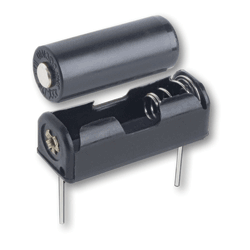Newer solid-state devices are proving more environmentally
friendly than mercury-based switches
BY HASSAN SAJADI
NKK Switches, Scottsdale, AZ
http://www.nkkswitches.com
Switch makers have long been at the forefront of innovation, due in large part to the constant demand for ever-smaller devices for both consumer and industrial markets. However, changes to environmental manufacturing regulations like the EPA’s mercury ban and new global restrictions like those in the RoHS directive have sparked a flurry of redesigns from component suppliers to OEMs. Switch designers must now be as concerned about environmental regulations as they are about details such as size, energy consumption, or reliability.
Pushbuttons, rotary switches, tactile devices, and other components have completed the redesign process in order to restrict the use of lead, cadmium, and other harmful chemicals. These types of switches have required mostly minor changes to meet environmental standards. However, one significant redesign, which has required the use of new technologies to support the environmental changes, has been that of the tilt switch.
The tilt switch
The tilt switch, which is known commonly for its use of mercury to measure angle changes, has required a complete redesign in order to meet these new environmental standards and requirements of applications which require high reliability for a long period of time. Used switches in a variety of applications, the tilt switch is implanted into appliances and equipment in order to measure angle movements above or below a horizontal axis.
Until recently, most tilt switches had either been mercury-filled or pendulum based. In fact, tilt devices were the most common switch to implement the use of mercury for measuring angle changes.

Solid-state switches are inherently more friendly to the environment than mercury-based devices.
However, mercury and pendulum tilt switches were not conducive to sensitive small-angle changes. With environmental regulations that restrict, and even ban, the use of mercury, the use of numerous mercury-filled components is now prohibited in most applications.
Environmental regulations
For more than nine years, the EPA has conducted research on the environmental and health effects of mercury. As a result of this research, several mercury-limiting regulations have been implemented both in the United States and internationally.
Tilt switches are directly affected by these new regulations, including RoHS, and engineers are currently looking for ways to incorporate environmentally compliant components while keeping their products user friendly and functional. With the advent of solid-state tilt switches, industry designers have not only found a compliant device but a more sensitive switch that they can rely on.
The new age of tilt switches
Within the past few years, new solid-state tilt switch designs have revolutionized the tilt switch industry. These designs offer the smallest packaging for implementation of alternative mercury devices.
Solid-state switches contain an IRLED and a phototransistor, which are angled slightly toward each other to create a focal point. The switch also contains a bright nickel- or gold-plated steel ball that functions as the mirror and rests at the focal point when the tilt switch is level, the point at which the mirrored, curved surface of the ball reflects the infrared beam to the phototransistor to conduct.
Inside the tilt switch
When the switch is level, the mirror ball is held in place by a small hole just above the focal point. Surrounding this hole is a rose-petal-shaped set of steps rising from the hole like three steps arranged on the inside surface of a cone.
As the tilt switch is inclined away from the level condition, gravity causes the mirror ball to fall into the groove provided by the first steps. As the incline increases, the ball will operate when tilted in any direction from the level condition.
At an incline between 0 and 30, the output of the phototransistor is low; as the incline changes between 30 and 60 it will produce a high output until the ball comes back down in range. Because the mirror ball is moved by gravity, the level condition of the ball is always in the same horizontal axis. As such, there are horizontal and vertical versions of these solid state solutions.
The only significant difference between these versions is the through-hole terminal arrangement — the ball always operates against gravity in the horizontal arrangement. The only limit to the longevity of the design is the long life of the infrared beam. ■
Advertisement
Learn more about NKK Switches





